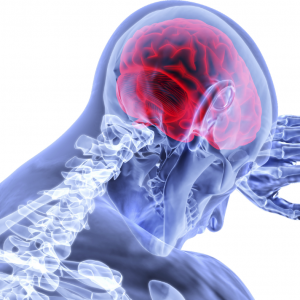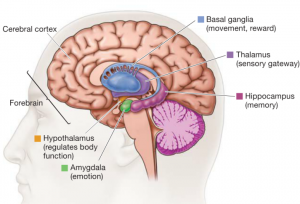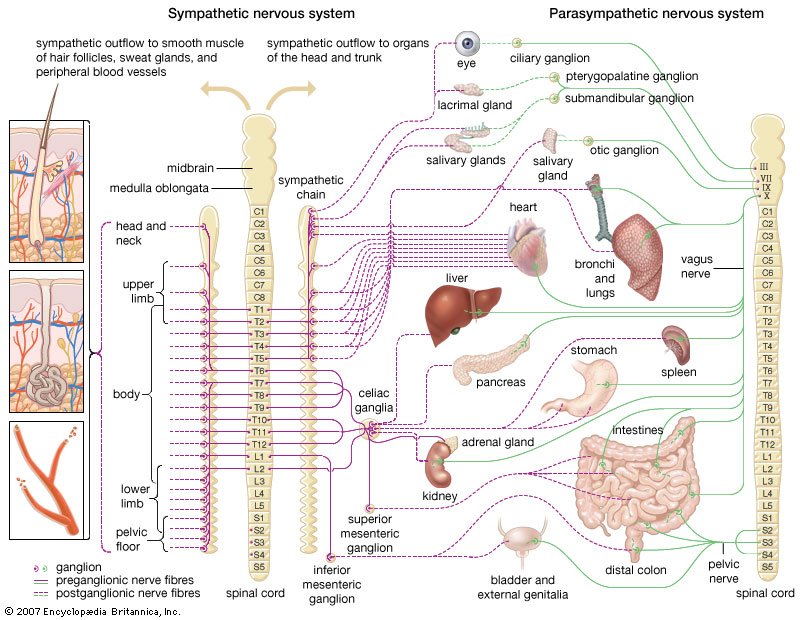Brain Systems
By Christine Ferch

The Different Systems of the Brain
The brain, is my favourite component to biology leading to a fascination in the investigation of the brain and behaviour, biopsychology, my favourite undergrad course alongside endocrinology, the study of hormones.
The brain is a very complex structure, think of all the things we are capable of from all the components to emotions, all the components associated with how we carry out our thoughts and the mechanisms connected to these thoughts to the behaviours we engage. All these traits are not just floating around in our brain space but are lumped into the different systems which carry out these tasks to initiate responses in thoughts, feelings, and behaviours.
Our systems would not work if it were not for neurons! Neurons are what fire in our systems to send messages throughout the brain and our body. There are three different types of neurons the interneuron, which connects information between sensory and motor neurons. Motor neurons carry motor information and sensory neurons, carry sensory information.
Central Nervous System (CNS)
The primary and probably most familiar system we are aware of. The central nervous system comprises of our brain and spinal cord, down the branches of the peripheral nervous system (PNS), the second component of the CNS, where our neurons travel, up and down sending out sensory, integration and motor signals. PNS helps to regulate involuntary body functions like our heartbeat and breathing.
The PNS is divided into two other systems:
Somatic: System is responsible for carrying sensory and motor information to and from the CNS. It transmits sensory information and voluntary movements. Sensory and motor neurons are part of this system.
Autonomic: This system is responsible for regulating our involuntary body functions like blood flow, heartbeat, digestion and breathing. This system allows these functions to occur without us needing to be consciously thinking about it.
This system also has two branches,
- Sympathetic System: regulates our fight, flight or freeze response.
- prepares our body for energy and to deal with potential threats in our environment
- If action is needed, our sympathetic system triggers an increase in heart rate, breathing rate and blood flow to muscles
- Parasympathetic System: Maintains our normal body functions and conserve physical resources. When a threat has passed:
- our body strives to return to baseline
- our heart rate slows, we are no longer perspiring, our breathing is at a healthy pace, our bodies are not as tense
- We can often become exhausted about this experience
Limbic System
The limbic system is a system which sits above the brain stem, within the cerebellum with deals with emotions such as happiness, anger, and fear, and it is also responsible for memories. The limbic system controls these emotions and other brains functions associated with instincts and memories.
The limbic system has three main functions: emotions, memories and arousal and has several parts; a few of the important ones are described. The first structure is the thalamus which is responsible for detecting and relaying information from our senses and is the pathway of information to the cerebellum. The cerebrum is responsible for thinking and movement.
The Hypothalamus is next, and this nifty structure is vital as it is responsible for producing the chemical messengers, or hormones such as estrogen, testosterone, progesterone and cortisol. These hormones control water retention in the body, sleep cycles, body temperature and food intake.
Amygdala, is my favourite because it does a lot and it is fun to say!
This structure is a cluster of nerve cells shaped like an almond on the side of the cerebrum and is responsible for preparing our body for emergencies. The amygdala also assists with the development of memories, especially those related to emotional or traumatic events. The development of fear is a strong amygdala function and is responsible for our levels of panic.
To deal with fear and anxiety, it helps to understand what the amygdala does and how it triggers alarms in the mind, and in the body. It monitors what goes on around you. If something happens that is unexpected or non-routine, the amygdala zaps you with stress hormones. The first creatures to have an amygdala had no cortex. Since there was no thinking part of the brain, when the amygdala noticed something non-routine, the stress hormones caused an urge to escape. The creature just ran away.
Later, when the cortex was added, stress hormones continued to produce that urge to run as before. But, stress hormones also activate the cortex. Upon activation, the cortex inhibits the urge to run, and assesses the situation to determine whether escape is necessary. After all, escape uses calories that will have to be replaced, and puts wear and tear on the body.
These systems composed of many different attributes we expose as humans. Damage done to any one of these systems can cause a variety of different distress to the individual. This damage can be caused at birth, accidents or substance use.
I hope this article was useful in explaining how our systems work in unison and why we have individual responses to our experiences. If you enjoyed this article you may enjoy some of our other ones too. Learn more.
For more information or if you have any questions or concerns, feel free to contact us at admin@ovcs.ca.

Don’t forget to Like, Share and Follow Us on our social media links too.

Our Links on Social Media:
- Facebook – https://www.facebook.com/orchardvalleycounselling.ca/
- Instagram – https://www.instagram.com/orchard_valley_okanagan/?hl=en
- LinkedIn – http://LinkedIn https://www.linkedin.com/company/orchard-valley-counselling-services/?viewAsMember=true
- Twitter – https://twitter.com/ovcs2017




